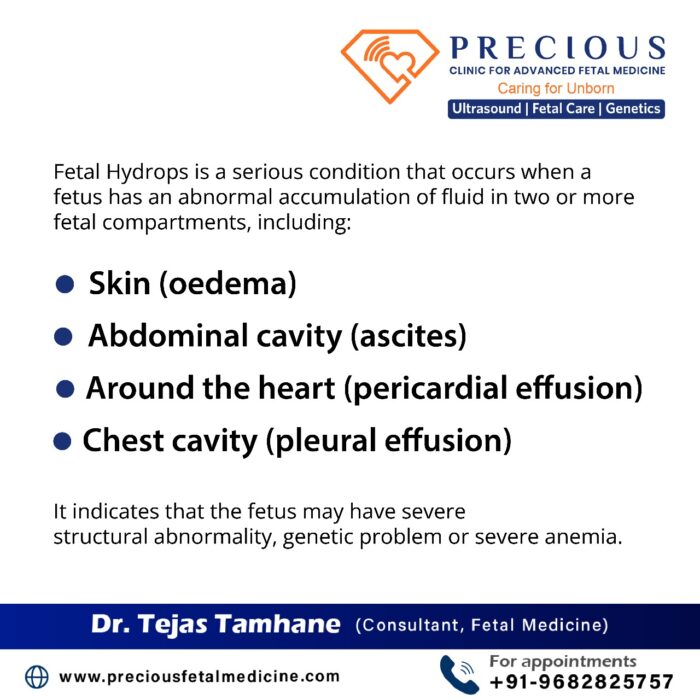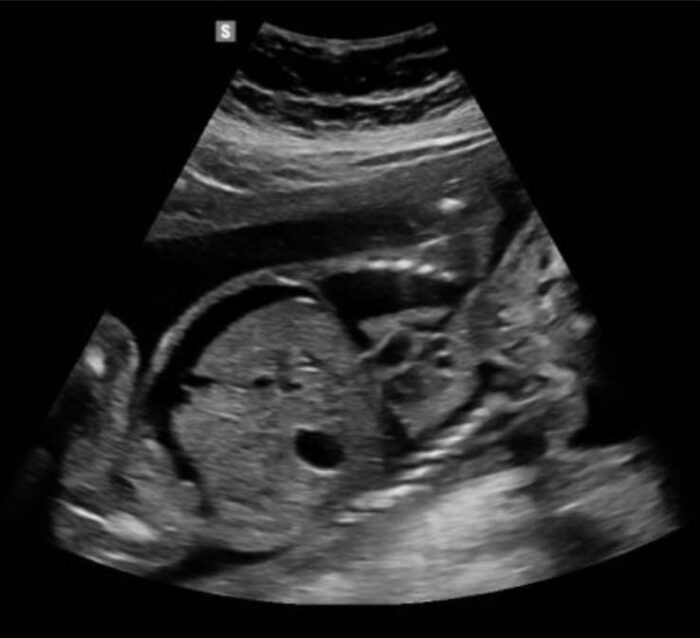Fetal hydrops, also known simply as hydrops, is a serious condition characterized by an abnormal accumulation of fluid in various fetal compartments, including the skin, abdomen, and cavities surrounding the lungs and heart. Let’s understand its symptoms, diagnosis and treatment options in detail.
What is Fetal Hydrops?

Fetal Hydrops is a serious condition that occurs when a fetus has an abnormal accumulation of fluid in two or more fetal compartments, including:
-Skin (oedema)
-Abdominal cavity (ascites)
-Chest cavity (pleural effusion)
-Around the heart (pericardial effusion)
It indicates that the fetus may have a severe structural abnormality, genetic problem or severe anaemia.
Symptoms of Fetal Hydrops:
Diagnosing fetal hydrops might be difficult because the symptoms are frequently unclear. However, the following are typical indicators:
- Excessive fluid accumulation: If there is an accumulation of fluid, the infant may show obvious swelling of the skin, belly, or other body parts.
- Reduced fetal movement: A discernible decline in fetal activity or movement could indicate discomfort for the fetus caused by hydrops.
- Mother-specific symptoms: Because of the increased volume of fluid in the uterus, mothers can feel bloating, dyspnea, and stomach pain.
Diagnosis:

The most popular method for diagnosing hydrops is to perform prenatal ultrasound exams. Further testing to determine the underlying reason will be carried out if the ultrasound reveals the telltale symptoms of fluid buildup.
- Amniocentesis: Following the collection of a sample of the fluid surrounding the foetus, the genetic makeup and state of infection are examined.
- Chorionic villus sampling (CVS): Similar to amniocentesis, a tiny sample of placental tissue is taken during this procedure and examined for genetic problems.
- Foetal blood sampling: A tiny sample of the infant’s blood may be drawn in order to count blood cells and look for any underlying medical issues.
- Foetal echocardiogram: This kind of ultrasonography may detect cardiac problems that could be the cause of hydrops by using sound waves to produce incredibly accurate images of the developing heart.
Treatment Approaches:
Unfortunately, there’s no single treatment for hydrops as it depends entirely on the underlying cause. Treatment approaches may include:
- Addressing the underlying cause: Identifying and treating underlying conditions such as fetal anaemia, infections, or genetic abnormalities is essential in managing fetal hydrops.
- Fetal interventions: In some cases, depending on the specific cause and the baby’s condition, procedures like in-utero blood transfusions (replacing the baby’s blood with healthy blood) or inserting a shunt to drain excess fluid in the chest or abdomen might be attempted.
- Planning for delivery: Depending on the severity of the condition and the fetus’s gestational age, delivery may be advised to stop further issues and give the newborn the care they need.
Prognosis:
Depending on the underlying reason, the degree of fluid accumulation, and the efficacy of any current treatments, newborns with hydrops have varying prognoses. Unfortunately, there is a significant chance of complications with hydrops, including fetal death.
In Conclusion
Fetal hydrops is a complex and potentially life-threatening condition that requires prompt recognition and management to optimize maternal and fetal outcomes. Early detection, comprehensive prenatal care, and multidisciplinary collaboration are key factors in improving the prognosis for babies affected by this condition.
Fetal Hydrops Diagnosis and Treatment in Pune
Connect with Dr Tejas Tamhane, renowned Fetal Medicine Expert in Pune, to help you through the diagnosis and treatment of fetal hydrops.

